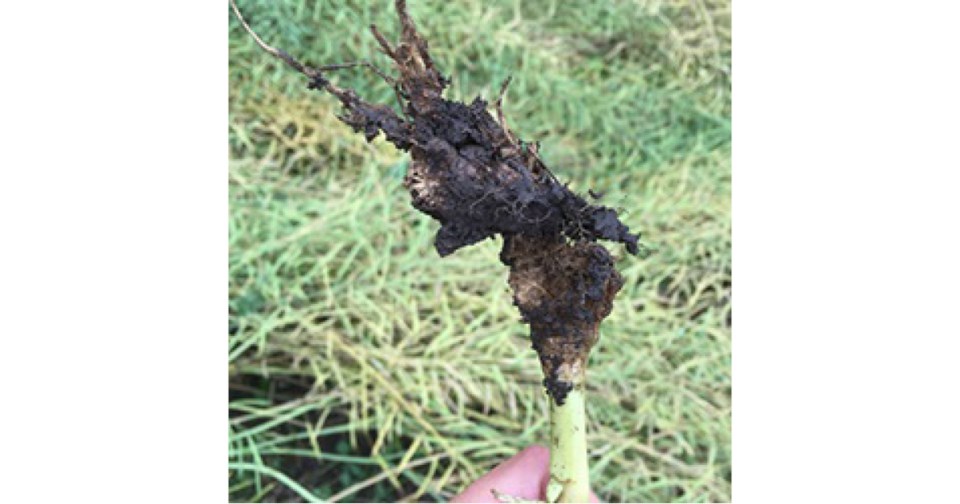NORTHEAST — SaskCanola has discovered 37 canola fields in Saskatchewan were infected with clubroot.
“We’re finding it more and more,” said Kim Stonehouse, crops extension specialist with the Saskatchewan Ministry of Agriculture in Tisdale. “It has always been an issue, the thing is since we weren’t finding a lot of it, we kind of got complacent.
“Now that we’re discovering more fields that are positive for clubroot spores and clubroot symptoms, definitely it’s on producers’ minds more than it has been.”
The finding was part of an extensive clubroot survey conducted this year that involved 1,800 fields.
Symptoms of clubroot include infected roots with galls – swollen root tissues – that will initially appear white and fleshy. Later in the season they will start to decompose and appear rotten.
Above-ground symptoms include stunting, yellowing and premature ripening. While these symptoms may indicate the presence of a clubroot patch, it could also be associated with other diseases or adverse environmental conditions. Due to this, producers should examine the roots for galls.
“It causes galls to form on the roots which starves the plant of nutrients, and so by doing that it basically causes premature ripening and a significant yield loss,” Stonehouse said.
The first step, Stonehouse says is to watch over your canola fields carefully.
“I think the number one thing is be proactive as possible to scout your fields for it, anywhere you see patches of canola that is ripening prematurely to pull up the plants and see if there are galls on the roots or at least diagnose to see that the issue is in that area,” Stonehouse said. “Then if it is, to report that to the ministry of agriculture or the RM that you’re in.”
If you do have clubroot there are methods you can take to stop the spread.
“Clubroot is a soil borne disease so that means it is transported on any soil, what they call tag, on your equipment or tractors or wheels or any of that sort of thing. If you move from one field to another you can actually transport the spores for clubroot and cause a clubroot infestation in another field. So sanitation is probably a key to preventing that from moving. Even if you don’t think you have clubroot, it’s still a good idea to go out and remove the soil off equipment before you move it to another field and it’s a good idea that anything else that is coming to your field has been washed thoroughly.”
Farm equipment can be disinfected with a bleach solution.
Crops infected with clubroot will still be useable, but will produce lower yields.
“It doesn’t cause a problem with the seed at all,” Stonehouse said. “It basically just shuts down the plant so the yield from it is limited and significantly limited. So that basically the plant slows down and doesn’t make as much seed, but the seed that is in it has not changed from what it would have been had clubroot not been there.”




